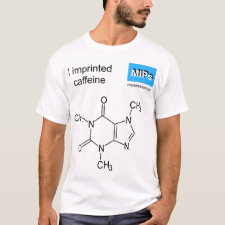
Authors: Ebarvia BS, Sevilla III F
Article Title: Piezoelectric quartz sensor for caffeine based on molecularly imprinted polymethacrylic acid.
Publication date: 2005
Journal: Sensors and Actuators B: Chemical
Volume: 107
Issue: (2)
Page numbers: 782-790.
DOI: 10.1016/j.snb.2004.12.018
Abstract: The feasibility of a piezoelectric quartz caffeine sensor based on a molecularly imprinted poly methacrylic acid is described. The caffeine sensor was devised by depositing the polymer onto one side of an AT-cut quartz crystal through an electropolymerization process The sensor response exhibited a linear relationship between frequency shift and the logarithm of the caffeine concentration in the range of 1 x 10-9 up to 1 mg/mL. The sensor showed a sensitivity of about 53 Hz/ln (conc., mg/mL) and a limit of detection of 5.9 x 10-11 mg/mL. The performance of the sensor was affected by parameters such as the nature of the immobilizing agents, the polymer load, the thickness of the coating and the pH. Surface analysis techniques such as scanning electron microscopy (SEM), atomic force microscopy (AFM) and X-ray photoelectron spectroscopy (XPS) were performed on the sensor surface to establish the imprinting of the caffeine molecule. The SEM micrographs, AFM image and XPS spectra provided evidences for the imprinting process and the recognition of caffeine by the MIP during the sensing process
Template and target information: caffeine
Author keywords: caffeine, piezoelectric sensor, biomimetic sensor, molecularly imprinted polymer, surface analysis



Join the Society for Molecular Imprinting

New items RSS feed
Sign-up for e-mail updates:
Choose between receiving an occasional newsletter or more frequent e-mail alerts.
Click here to go to the sign-up page.
Is your name elemental or peptidic? Enter your name and find out by clicking either of the buttons below!
Other products you may like:
 MIPdatabase
MIPdatabase









